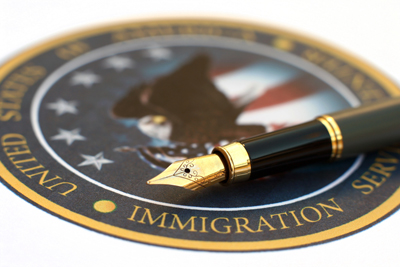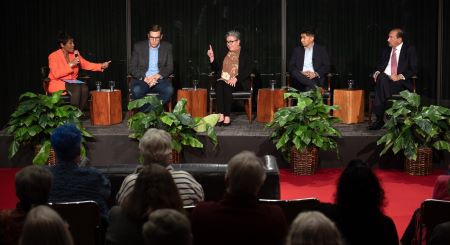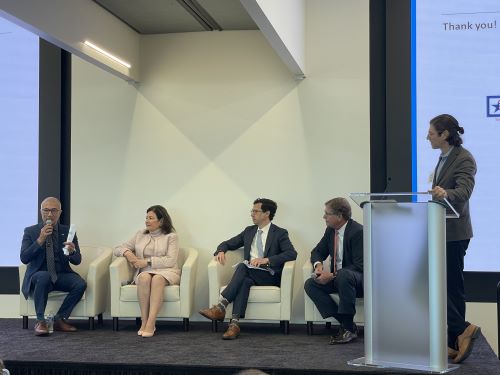Filling the Gaps
 The next administration and Congress will be under intense pressure to reform immigration. Frustration over illegal immigrants was the greatest contributor to the rise of Donald Trump while Hillary Clinton promised to push for reform in her first 100 days. Big comprehensive reforms that fix all portions of the system are politically difficult. Nevertheless, there are smaller changes that could make a big difference to the legal immigration system. Here are three crucial reforms.
The next administration and Congress will be under intense pressure to reform immigration. Frustration over illegal immigrants was the greatest contributor to the rise of Donald Trump while Hillary Clinton promised to push for reform in her first 100 days. Big comprehensive reforms that fix all portions of the system are politically difficult. Nevertheless, there are smaller changes that could make a big difference to the legal immigration system. Here are three crucial reforms.
The first such reform is an executive action by the president to reinterpret how the government allocates employment based green cards. Under current law, 140,000 highly skilled immigrant workers are supposed to be issued green cards annually according to a 1990 law. However, an erroneous interpretation of that 1990 statute counts the family members of those skilled workers against the cap. The result is that most employment based green cards are actually issued to the family members of the workers.
This erroneous interpretation could be ended by the next administration, a reform that would more than double the number of employment based green cards issued annually. A wonderful side-effect of this would be to drastically shorten or even eliminate the green card backlog for Indians, Chinese and Filipinos who are here on work visas like the H-1B — freeing them to start businesses, remove visa uncertainty and change jobs without jumping through bureaucratic hurdles.
The second vital reform is to comprehensively review regulations governing temporary guest worker visas with the ultimate goal of streamlining and deregulating them. Foreign temporary workers are beset by a complex set of rules and regulations governing work conditions, housing requirements and wages. For example, the H-2A visa for seasonal agricultural workers is regulated by four federal agencies — the U.S. Department of Agriculture, Department of Homeland Security, the Department of Labor and the Department of State.
However, many of the temporary guest worker regulations often go beyond the minimum required by the statutes. Reducing the burden of regulations while complying with the statutes will make it easier for American employers to hire legal guest workers and thus reduce the demand for illegal immigrant workers. Since 1997, the total number of guest worker visas issued has increased by 124 percent. Stunningly, the number of these visas allocated to Mexicans has shot up by a whopping 392 percent from 39,452 to 194,235.
That increase in guest workers has not only helped the U.S. economy grow but it has also decreased the flow of new illegal immigrants into the country. Since 1997, apprehensions of Mexican illegal immigrants at the border have fallen by 86 percent as the number of guest worker visas has shot up. Other factors like relative economic growth and the increase in border security also contributed to this trend, but more Mexican guest workers took pressure off of the border.
The new sources of illegal immigrants are from Central and South America. Making it easier for workers from those countries to receive guest worker visas will make it easier to increase security at the border.
The third reform should be to allow states to run their own visa systems parallel to the federal government’s — which would require an act of Congress. A state-run visa program for temporary workers introduces federalism into the immigration system by allowing states to get the actual workers industries in their states demand and experiment with different forms of regulation. For instance, the H-2A visa does not allow for year-round work in agriculture, meaning that many dairy farms hire illegal immigrant workers. A state-based visa could allow dairy producing states to create a visa for year-long agricultural workers to fill that and other gaps, further reducing the demand for illegal workers.
In addition to workers, states could also set up visas for entrepreneurs and smaller-scale investors — categories that don’t currently exist in the federal system. Canada and Australia have similar regional migration programs. These programs have created greater population and employment growth, according to Cato Institute research by Brandon Fuller and Sean Rust. And the stakeholders are happy with the results.
States want this type of program. In 2015, legislators in Texas and California introduced legislation to experiment with their own state-level migration systems. Utah created such a program in 2011 but was never granted federal permission to actually start recruiting workers. In previous years, over a dozen other states have considered setting up their own migration systems, lobbied for a special allotment of existing federal visas, or asked the federal government for permission to run their own systems. The federal government has always refused to let them.
These three immigration reforms — two that require only executive actions and one that must be passed by Congress — would do a lot to fill gaps in the current law. Reforming the immigration enforcement apparatus and legalizing illegal immigrants are other essential components of a successful immigration overhaul, but fixing the legal system is paramount, easier to accomplish and guaranteed to reduce illegal immigration in the future.








